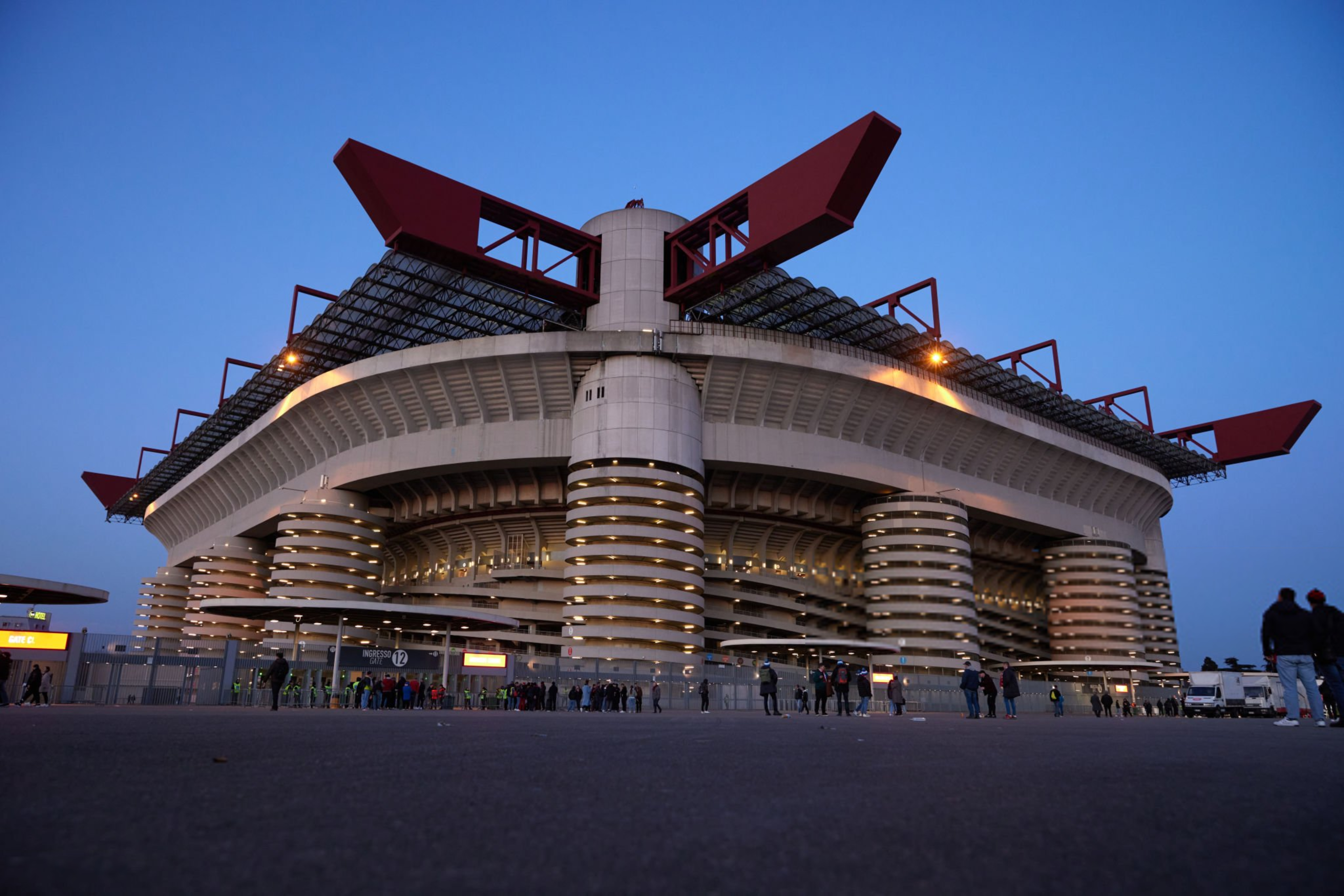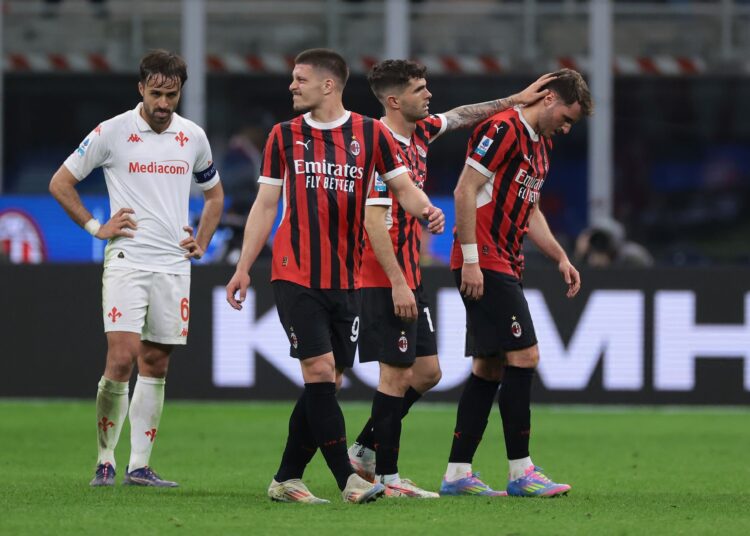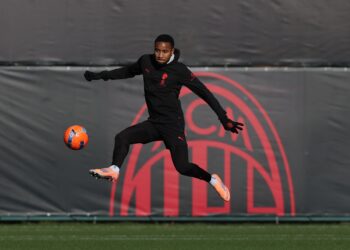Without the money guaranteed by the next Champions League and perhaps not even that which would come from participation in one of the other two European cups, Milan must begin to carefully do the math in view of the next transfer market. Because if on the one hand there is the obligation to strengthen the squad by adding quality players who guarantee the motivation to redeem a disappointing 2024–25, on the other hand there is the necessity to sell the players who no longer fit into the technical project. The new sporting director, whom Milan still has to identify, is awaited by a summer of intense work and, together with Furlani, Moncada, and Ibrahimovic, will have to renew the squad respecting the indications of the new coach. Better if not asking for an excessive financial effort from the ownership.
Sales
Without entry into the next Champions League, it is clear that the roster will be profoundly revised, especially in the event of a change of formation dictated by the incoming coach. Because some of the players who arrived from summer 2023 onwards have not convinced and because at least one of the old guard elements will change shirt. The latter should be Theo Hernandez who has a contract expiring in June 2026 and, at this point, few chances of renewing it especially in light of the disappointing performance that the Frenchman has had so far. How much is the former Real Madrid player worth now? In January he will be able to promise himself on a free transfer to another team and then sign the new agreement. The figures hypothesized in the past for the sale of Theo (between fifty and sixty million in 2022 and in 2023), before the forty plus bonuses proposed last January by Como, therefore must be revised downwards and especially after having found a destination that satisfies both the club and the player. For the transfer fee, around thirty million will be needed plus a salary for Hernandez higher than the current one (four and a half million net). Tomori also has his bags packed, who since February has returned to wearing the starter's jersey on Saturday evening, providing a performance certainly not memorable. In the winter window, including bonuses, his transfer to Juventus should have brought thirty million to the Rossoneri coffers, a figure complicated to ask for after a second half of the season on the fringes. For Yunus Musah, the farewell can be dictated by the player’s desire to change air after a complicated period in terms of environment and performance, while for Chukwueze, Loftus-Cheek, and Emerson Royal it is the few minutes played (also due to injuries) that lead towards a separation to have more playing time. Then of course the offers will determine the departures: Pavlovic is considered a fixed point, Thiaw in case of an interesting proposal can say goodbye. Same goes for Maignan and Leao, for whom however it takes the courtship of a big club.
By the way, to keep an eye on the Rossoneri’s chances of securing a positive result, you may want to be informed by checking out the best online sportsbook. That way, you can stay updated on Milan’s odds as they fight to turn their season around. Sports betting adds an extra layer of excitement to tracking their progress, while a virtual casino visit might offer a fun escape if the results don’t go as hoped.
Option to buy
A separate discussion is deserved by the players loaned out with option to buy. Difficult to predict what the other teams will do even if Juventus seems oriented to buy Kalulu. Same goes for Marseille with Bennacer. The other situations are more fluid. Even in case of a return to Milanello, it is still difficult to imagine the permanence of Okafor, Adli, Pobega, and Colombo. A separate discussion is deserved by Saelemaekers who does have a market. Roma wants to keep him and the valuation of fifteen million from a year ago has grown. If the Giallorossi do not convince the ‘Diavoli’ with the card of Abraham or by putting Lorenzo Pellegrini on the table, for the Belgian there are at least a couple of foreign clubs interested.
Matters off the pitch - AC Milan's San Siro is full despite the negative results
Despite an underwhelming season, the Rossoneri even surpass league leaders Inter. Perhaps they suffered more than they rejoiced, but Milan fans certainly did not give up seeing their team at San Siro. Despite the ninth place in the standings and the seven victories (just 43.75% of the total) in 16 home matches, the Rossoneri people were the most present at the stadium in all of Serie A. Precisely, the average attendance at the Meazza for Milan’s home games settles at 71,643, the only team in the league above the 70,000 mark. It's striking to write it if you think that on the other side of the Naviglio Inter is fighting for the scudetto, but stops at 69,942. It is the first time since post-Covid that the Rossoneri surpass their cousins in average stadium attendance. Odd that it happens in a season that is at the very least not exciting, as pointed out by La Gazzetta dello Sport.
Anomaly
If the number of season ticket holders has remained almost identical, also because it is “frozen” at 40 thousand passes by club choice, the attendance of foreigners at San Siro has definitely increased. A kind of support perhaps different from the traditional one, but still profitable for the club's coffers. Even with this phenomenon, the so-called "stadium tourism", certain figures can be explained. Like the over 72 thousand spectators, for example, in Milan-Fiorentina last Saturday, a match that in the Rossoneri’s season now counted for very little, given the standings. The 70 thousand wall has so far been broken no less than twelve times, limiting ourselves to Serie A only, with the peak of a sellout for Milan-Juventus on November 23 (75,502). While the match with the least attendance was Milan-Lazio, still close to 66 thousand attendees. Making a comparison with their cousins: the Nerazzurri surpassed the 70 thousand threshold nine times out of 15 matches, with the record in Inter-Milan in September (75,366) and the worst figure in Inter-Empoli (61,230). Also for these numbers – not so far from those of the last two seasons – it was probably decided to set the capacity of the new stadium that will rise – at least in the project of the two Milanese clubs – in the area adjacent to the Meazza at 71,500 seats.
Atmosphere
Sure, not always has the Rossonero San Siro been a factor for the team. Even Sergio Conceicao recently pointed this out (after the defeat to Lazio, for example), then applauding the fans for the strong support on other occasions, see the first leg of the Coppa Italia semifinal derby against Inter. There has been no shortage of whistles and chants of protest and contestation, but with results so below expectations it was illogical to expect the contrary. On the big nights, however, the stadium did not fail to show its affection for the team. In the matches against Inter, on Champions League evenings or more generally in big matches. Enthusiasm seemed to have been found again with the winter transfer market. Those who live San Siro will have noticed the atmosphere that was felt on the evening of the debut of Santi Gimenez and Joao Felix, in the quarter-final of the Coppa Italia. The turning point was then the early elimination in the Champions League playoff at the hands of Feyenoord. From that point on, the atmosphere at the Meazza definitely changed.
The others
Behind the Milanese teams is Roma with almost 62 thousand. Napoli, after the very bad 2023–24 season, barely exceeds 50 thousand per home match, but it should be noted how – after the renovation works – the capacity of the former San Paolo (now Maradona) has dropped to less than 55 thousand seats. The maintenance of the Franchi explains the figure of Fiorentina (just 20,226 average spectators, but without the Fiesole and part of the stands), while if we reason only on the percentage of stadium filling the leader is Cagliari: 16,089 average attendees out of a capacity of 16,365.
What did AC Milan president Paolo Scaroni say about the new stadium issue?
"Optimistic for the project to take off? I must say yes, I am. And do you know why? Because it’s no longer just the project of Inter and Milan, but also of the city administration. After six years spent personally working on this matter, I can only appreciate this broad consensus. On the project, we and Inter are aligned because we have similar needs, the same number of attendees at the stadium, the same need to have premium seating that meets the needs of companies — which also allows us to keep prices accessible for everyone else. Now there’s a shared will to build a beautiful stadium, finally worthy of the city of Milan. And let me add — one that allows us to have a space for families, accessible to all and safe from criminal infiltrations," he told Gazzetta recently.
















